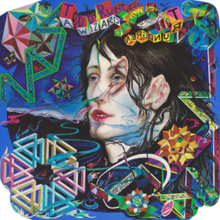| A Wizard, a True Star | ||||
|---|---|---|---|---|
 | ||||
| Studio album by | ||||
| Released | March 2, 1973 | |||
| Recorded | 1972–1973 | |||
| Studio | Secret Sound Studio, New York City (except "Just One Victory", Advantage Studios) | |||
| Genre | ||||
| Length | 55:56 | |||
| Label | Bearsville | |||
| Producer | Todd Rundgren | |||
| Todd Rundgren chronology | ||||
| ||||
A Wizard, a True Star is the fourth studio album by American musician Todd Rundgren, released on March 2, 1973, by Bearsville Records. It marked a departure from his previous album, Something/Anything? (1972), featuring fewer straightforward pop songs, a development he attributed to his experimentation with psychedelic drugs and his realization of "what music and sound were like in my internal environment, and how different that was from the music I had been making."[1][2]
The album was produced, engineered, and largely performed by Rundgren alone. He envisioned it as a hallucinogenic-inspired "flight plan" with all the tracks segueing seamlessly into each other, starting with a "chaotic" mood and ending with a medley of his favorite soul songs. At the time of release, he stated that Wizard intended to advance utopian ideals; later, he said that the album had no definite meaning. No singles were issued from the album, as he wanted the tracks to be heard in the context of the LP. With 19 tracks, its nearly 56-minute runtime made it one of the longest single-disc LPs to date.
Upon release, A Wizard, a True Star received widespread critical acclaim, but sold poorly, reaching number 86 on the U.S. charts. According to Rundgren, "the result was a complete loss of about half of my audience at that point." Rundgren formed Utopia, his first official band since the Nazz, to tour in support of the album. Their technologically ambitious stage show was cancelled after about two weeks on the road. A Wizard, a True Star has since been recognized for its influence on later generations of bedroom musicians.[2]
- ^ Myers 2010, p. 73.
- ^ a b Cite error: The named reference
pitchforkwas invoked but never defined (see the help page).